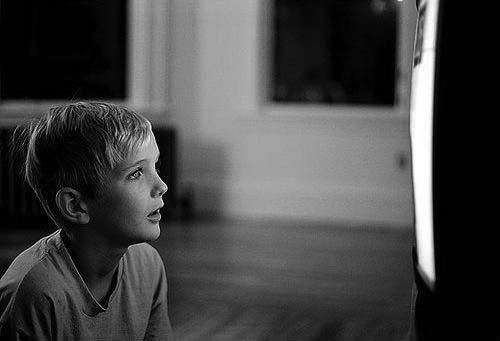In 1986, sociologist Mark Poster conducted a study of middle-class Orange County families. 290 families participated in his study. They were asked to fill out a questionaire about parenting styles, gender roles, intra-family relationships, etc. Poster's goal was to try to detect trends in how late 1980s Orange County families operated. His findings were pretty devastating:
“The contemporary family is remote from relatives and, as a unit, is not actively involved in the daily life of the community...Isolated from networks of sociability, the middle-class Orange County family is open to the influence of the wider society, especially to the consumer culture...New technologies, lke the TV, the VCR, and the computer, bring that outer world into family life with awesome realism and power. These technologies work to divide family members from one another, encouraging isolated activities within the home, and they deflect the attention of family members away from one another toward individual subcultures. Cartoons and MTV for children, soap operas for women, sports for men, to use the case of television, constitute miniworlds within the home that are neither like traditional communities with their face-to-face interactions nor like single-person activities such as reading a novel, which was so popular in the nineteenth century. In these respects the new family pattern promotes a deterioration of public life, at least in the traditional sense.”
I grew up in the 1980s, and I tend to agree with Poster’s findings. However, my family was a little more “old school” in that we often ate meals together and were involved in our church community. My parents took an active interest in my school and extra-curricular activities. But I remember visiting many of my friends’ houses, and feeling like they exactly represented the picture Poster paints. Video games were another factor that isolated children from their parents. I would spend hours playing Megaman, Metroid, and Super Mario Bros, completely cut off from other people or the real world.
So, how did the 1980s Orange County kids turn out? Obviously, I can’t speak for everyone, but I would like to address an interesting trend that I began to notice emerging around the time I got to high school. In the mid-to-late 90s, when a bunch of Orange County Reagan babies were hitting adolescence, a new style began to emerge, a style I would call “thrift store style.”
Fed up with the 1980s obsession with consumer culture, some OC adolescents started to make a deliberate revolt against that obsession, myself included. Instead of buying fashionable brand-name clothes at the Mall, we started shopping at thrift stores, getting shirts for a dollar, pants for a few bucks. We spent a fraction of the price as our brand-obsessed peers, and ended up with clothes that were completely unique among Orange County adolescents.
Granted, this mainly had to do with clothing choices. But for teenages who do not have a lot of money, our main purchasing choices have to do witih clothing and music. Another part of this “thrift store” fashion was a renewed interest in older styles of music. Fed up with the hyper-produced crap on the radio (KIIS FM), we started to take an interst in music from the 60s, back when rock and roll was a new and radical thing.
I think every generation defines itself, partly, in opposition to the previous generation. Among my generation, there arose a growing dissatisfaction with mass consumer culture, and I think this trend continues today, among the “hipster” artists and musicians, and I am proud to say that I was one of the OG hipsters. When I did it, it was not to follow a trend, but rather to revolt against the trends I was surrounded by.
So I guess my point is that, while Poster’s study paints a pretty grim picture of OC families in the 1980s, there are always exceptions to the rule. Poster himself predicts, “It is possible as well that as adults the Orange County children will bring new demands to the political arena, demands based less on the work ethic of the past than on a rounded vision of a fulfilling life.”

